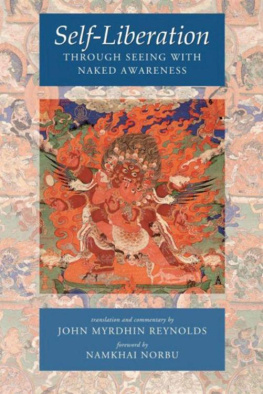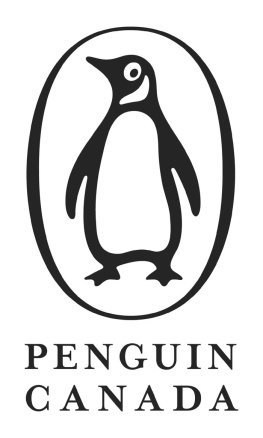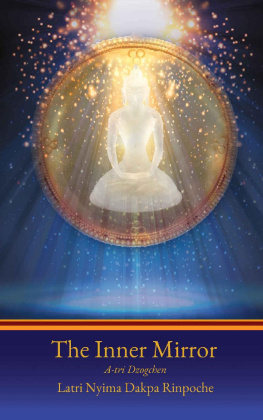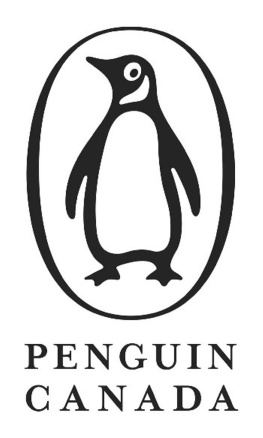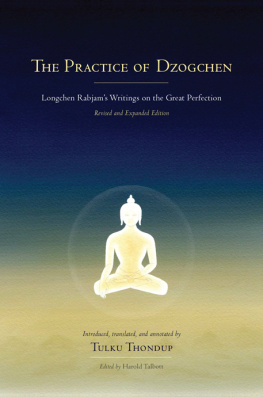John Myrdhin Reynolds - Self-Liberation through Seeing with Naked Awareness
Here you can read online John Myrdhin Reynolds - Self-Liberation through Seeing with Naked Awareness full text of the book (entire story) in english for free. Download pdf and epub, get meaning, cover and reviews about this ebook. year: 2010, publisher: Shambhala Publications, genre: Religion. Description of the work, (preface) as well as reviews are available. Best literature library LitArk.com created for fans of good reading and offers a wide selection of genres:
Romance novel
Science fiction
Adventure
Detective
Science
History
Home and family
Prose
Art
Politics
Computer
Non-fiction
Religion
Business
Children
Humor
Choose a favorite category and find really read worthwhile books. Enjoy immersion in the world of imagination, feel the emotions of the characters or learn something new for yourself, make an fascinating discovery.
- Book:Self-Liberation through Seeing with Naked Awareness
- Author:
- Publisher:Shambhala Publications
- Genre:
- Year:2010
- Rating:4 / 5
- Favourites:Add to favourites
- Your mark:
- 80
- 1
- 2
- 3
- 4
- 5
Self-Liberation through Seeing with Naked Awareness: summary, description and annotation
We offer to read an annotation, description, summary or preface (depends on what the author of the book "Self-Liberation through Seeing with Naked Awareness" wrote himself). If you haven't found the necessary information about the book — write in the comments, we will try to find it.
Self-Liberation through Seeing with Naked Awareness — read online for free the complete book (whole text) full work
Below is the text of the book, divided by pages. System saving the place of the last page read, allows you to conveniently read the book "Self-Liberation through Seeing with Naked Awareness" online for free, without having to search again every time where you left off. Put a bookmark, and you can go to the page where you finished reading at any time.
Font size:
Interval:
Bookmark:

Self-Liberation
Through Seeing with Naked Awareness
An Introduction to the Nature of Ones Own Mind from
The Profound Teaching of Self-liberation in the Primordial State of the Peaceful and Wrathful Deities
A terma text of Guru Padmasambhava expounding the view of Dzogchen, rediscovered by Rigdzin Karma Lingpa
Foreword by
Namkhai Norbu
Commentary by
John Myrdhin Reynolds
Snow Lion Publications
Ithaca, New York USA
Snow Lion Publications
P.O. Box 6483
Ithaca, NY 14851 USA
607-273-8519
www.snowlionpub.com
Copyright 2000, 2010 John Myrdhin Reynolds
Foreword copyright 1989, 2010 Namkhai Norbu
All rights reserved. No portion of this book may be reproduced by any means without prior written permission from the publisher.
ISBN 978-1-55939-352-2
The Library of Congress cataloged the previous edition of this work as follows:
Karma-gling-pa, 14th cent.
[Rig pa no sprod gcer mtho ra grol. English]
Self-liberation: through seeing with naked awareness; an introduction to the nature of ones mind from the profound teaching of self-liberation in the primordial state of peaceful and wrathful deities; a terma text of Guru Padmasambhava expounding the view of Dzogchen; rediscovered by Rigdzin Karma Lingpa; foreword by Namkhai Norbu; commentary by John Myrdhin Reynolds
p. cm
Originally published: Barrytown, N.Y.: Station Hill Press, 1989.
Includes bibliographical references and index.
ISBN 1-55939-144-8 (alk. paper)
1. Rdzogs-chen (Ri-ma-pa)Early works to 1800. I. Reynolds, John Myrdhin, 1942- II. Title.
BQ7662.4.k36613 2000
294.3420423dc21
00-061885
This work is dedicated to the memory of
His Holiness Dudjom Rinpoche, Jigdral Yeshe Dorje
(19041987)
In the eighth century of our era, the master from the country of Uddiyna, Guru Padmasambhava, who was the individual principally responsible for establishing the teachings of the Buddhist Tantras in Tibet, gave to his group of disciples there many vast and profound teachings related to both Tantra and Dzogchen. But since the Tibetan people were not ready for all of these teachings, many of which were more directly suited to future generations, he had his consort, the Tibetan princess Yeshe Tsogyal, write them down and hide them in various places throughout the country. Such deliberately concealed texts are known as Termas or hidden treasures. Those among his original group of disciples who were reborn in later generations in order to rediscover these texts are known as Tertons, those who reveal hidden treasures. The appearance of Termas and Tertons during the following centuries, including the present one, has been a source of unending benefit and blessing for the Tibetan people and represents the continuing revelation of the highest teachings of the Tantras and Dzogchen.
In the fourteenth century of our era, there appeared a great Terton by the name of Nyida Sangye. His eldest son in turn became a great Terton by the name of Karma Lingpa. When he was fifteen years old, from a location on the mountain of Gam-po-dar, which looks like a dancing attendant deity, in eastern Dwagpo, he discovered many profound teachings, principally the Zab-chos zhi-khro dgongs-pa rang-grol , otherwise known as the Kar-gling zhi-khro .
This cycle of texts of the Kar-gling zhi-khro represents an introduction to the state of Dzogchen, the Great Perfection. Dzogchen is not the name of a religion, philosophy, school, or sect but the Primordial State of the individual. The essence of the teachings of all the Buddhas is the understanding of this state, which is the nature of ones own mind. Among different schools this Primordial State has many different namesPrajnparimita, Tathgatagarbha, Bodhichitta, or Mahmudr. Among Tibetan Buddhists of the old school, the Nyingmapas, and also among the Bonpos, it is generally known as Dzogchen, which means the Great Perfection. It is also called tha-mal gyi shes-pa , which means ordinary awareness; but this is not our ordinary mind incessantly thinking of this or that throughout the day. In Dzogchen we make a radical and fundamental distinction between mind (sems) and the nature of mind (sems nyid); and here ordinary awareness refers to the latter. The nature of the mind is like a mirror which has the natural and inherent capacity to reflect whatever is set before it, whether beautiful or ugly; but these reflections in no way affect or modify the nature of the mirror. It is the same with the state of contemplation: There is nothing to correct or alter or modify (ma bcos-pa). What the practitioner does when entering into contemplation is simply to discover himself in the condition of the mirror. This is our Primordial State. But in order to recognize it, we first need transmission from a realized master in the form of an introduction (ngo-sprod) to the state of presence and awareness (rig-pa), which is the capacity of the nature of mind. This introduction, a meeting face-to-face, is precisely the function of the present text, which reports the very words of Guru Padmasambhava introducing his disciples to such presence or awareness. Hence this text, which is the root text of the Kar-gling zhi-khro cycle, is called Rig-pa ngo-sprod . By means of Rigpa we come to see everything with a direct immediate presence, denuded of the judgments and conceptual constructions that usually obscure our vision and obstruct our understanding. And in this way, we come to realize self-liberation (rang-grol). In the state of contemplation, when a thought arises, it is allowed to self-liberate into its own condition, without any effort or attempt at modification. Whereas the method of the Stras is the path of renunciation and the method of the Tantras is the path of transformation, the method proper to Dzogchen is the path of self-liberation, as is made clear in the teaching of Padmasambhava that we have here. This text, the Rig-pa ngo-sprod gcer-mthong rang-grol , which is part of the cycle of the Zab-chos zhi-khro dgongs-pa rang-grol , provides the essential view for this entire cycle of teachings relating to the six Bardos or intermediate states of existence. The Kar-gling zhi-khro is the most complete of all Zhi-khro (or Bardo) teachings and is widely known and used, especially among the Nyingmapa and the Kagyudpa schools. These teachings continue to generate activities for the benefit of beings, and in no way have they been exhausted.
In terms of my own personal experience as a young student in Derge in eastern Tibet, I received the transmission for the Kar-gling zhi-khro some five times. Principally I received this transmission from Khanpo Kunga Paldan (1878-1950), who was a master of my uncle Khyentse Rinpoche, Jamyang Chokyi Wangchuk (1910-1963). Originally a Sakyapa monk, Kunga Paldan was very non-sectarian (rip-med-pa) and became a disciple of the famous Nyingmapa master Dza Patrul Rinpoche. Having been ordained in the Sakyapa tradition, he then went to study at Dzogchen monastery, which is one of the principal and most famous Nyingmapa monasteries in Kham or eastern Tibet. It was founded by Padma Rigdzin (1625-1697) in 1685. The monastery received the patronage of the royal family of Derge and became one of the largest Nyingmapa monasteries in Tibet; it was like a large-scale city and it had thirteen different retreat centers. Here Kunga Paldan became the disciple of many eminent masters such as Patrul Rinpoche (1808-1887), Mi Pham Rinpoche (1846-1912), and Adzom Drugpa (1842-1924). Eventually he was invited to become a khanpo at Dzogchen Monastery, a position which is much like a professor at a western university. Normally at Dzogchen a khanpo holds office for three years and then retires in order to make a long retreat. This he did, retiring to Norbu yul-gyal, a snow mountain above the monastery, lying in the Zilthang mountains of Derge. On this mountain lived many hermits originally from the monastery below. The mountain had three levels: at the base was a thickly forested area; then came a barren rocky area above the timber line; and finally there was the topmost region of permanent snows. Kunga Paldan spent many years living both in the forest and in caves in the snow region. Eventually he returned to the monastery in order to teach, later retiring to his mountain retreat for the remainder of his life. It was my good fortune to be able to meet him through my uncle and have him be my principal teacher for these Zhi-khro practices.
Font size:
Interval:
Bookmark:
Similar books «Self-Liberation through Seeing with Naked Awareness»
Look at similar books to Self-Liberation through Seeing with Naked Awareness. We have selected literature similar in name and meaning in the hope of providing readers with more options to find new, interesting, not yet read works.
Discussion, reviews of the book Self-Liberation through Seeing with Naked Awareness and just readers' own opinions. Leave your comments, write what you think about the work, its meaning or the main characters. Specify what exactly you liked and what you didn't like, and why you think so.

